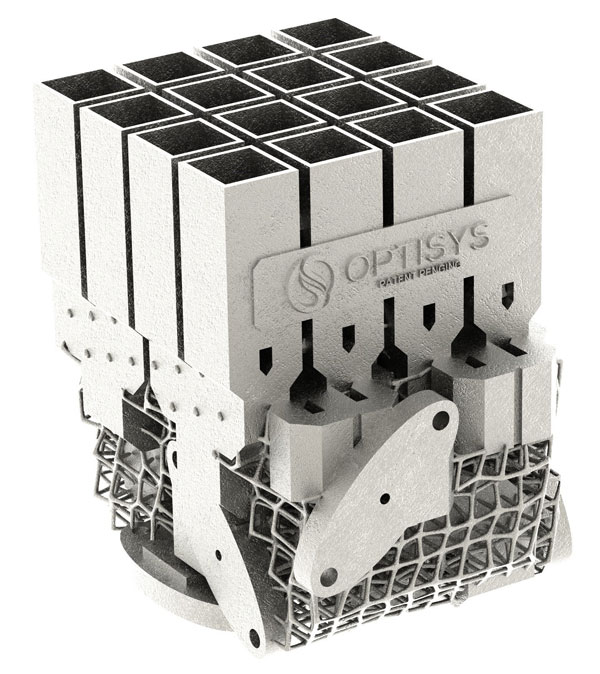One Hundred Parts Down to One with Metal 3D Printing

Latest News
June 23, 2017
Optisys LLC, a provider of 3D-printed metal micro-antenna products for aerospace and defense applications, recently completed a project that it says documents advantages of employing additive manufacturing (AM).
 Optisys redesigned a large, multi-part antenna assembly (left) into a palm-sized, lighter, one-piece, 3D-printed metal antenna (right). The component was manufactured with a Concept Laser machine.
Optisys redesigned a large, multi-part antenna assembly (left) into a palm-sized, lighter, one-piece, 3D-printed metal antenna (right). The component was manufactured with a Concept Laser machine.Antennas are critical for conveying information—voice, video and/or data—across long distances. They are widely employed in commercial and military aircraft, spacecraft, satellite communications, unmanned aerial vehicles (UAVs), and by ground terminals and land-based troops. Yet the complex radio frequency (RF) components that make up an antenna system can be large and heavy—characteristics that can impact mobility and performance.
“Companies in the commercial and military space are pressured for shorter lead-times, lighter weight and smaller antennas,” said Clinton Cathey, Optisys CEO in a press release. “By combining RF design simulation, mechanical engineering, and system optimization focused on AM, we provide metal 3D-printed antenna products at greatly reduced size, weight, lead-times, part count and cost—with as-good or better RF performance than conventionally manufactured systems. We’re creating structures that were simply not possible to produce in the past.”
The test-piece demonstrator project involved a complete redesign of a high-bandwidth, directional tracking antenna array for aircraft (known as a Ka-band 4×4 Monopulse Array). Optisys performed every aspect of the design work in-house and printed the component in a single piece on their Concept Laser machine.
“Concept Laser’s powder-bed fusion in particular is perfect for this application because of the fine resolution it provides for antennas functioning in the one to one-hundred Gigahertz [GHz] range of RF in which most of our potential customers operate,” said Cathey via a press release.
Part Consolidation Benefits
Manufacturing antenna systems via conventional methods is a complex, multistage process that can take an average of eight months of development time and three to six more of build time, says Optisys COO Robert Smith, M.E.Optisys conducted a profitability analysis on how their redesigned microwave antennae test piece compared to a legacy design that is traditionally manufactured. By optimizing their design for additive manufacturing, Optisys realized the following benefits:
- Part count reduction from 100 discrete pieces to a 1 piece integrated assembly
- Weight savings of over 95%
- Lead time reduced from 11 months to 2 months
- Production costs reduced by 20-25%
- Non-recurring costs reduced by 75%
Optisys can print in a variety of metals with its Concept Laser machine, though for antenna products they prefer aluminum because of its surface conductivity, light weight, corrosion resistance and strength under shock and vibration.
Part consolidation through AM provides a number of downstream benefits as well, Smith said, because it also reduces assembly and rework, makes it easier to add features to an existing AM design, and assemble the finished components. In the long-run, there is less testing, maintenance and service when you have fewer parts, he said.
For more information, visit Optisys and Concept Laser.
Subscribe to our FREE magazine, FREE email newsletters or both!
Latest News






